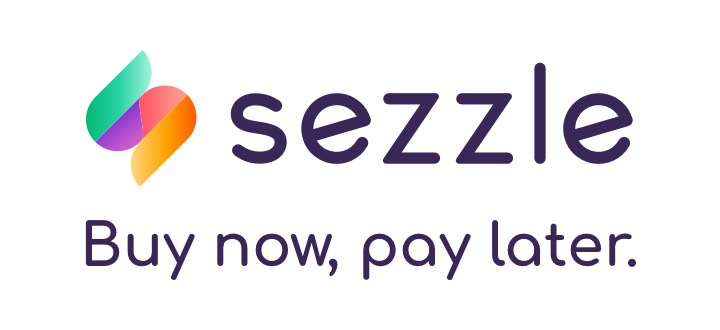The Battle of Heartburn Medications: A Closer Look at Pantoprazole vs Dexilant
Category: Prescription Related Questions
Author Scott
Posted on February 15, 2024
Scott is passionate about health and wellness, and enjoys writing on various topic surrounding these fields. Scott lives in Seattle and spends his free time restoring old furniture and playing pickleball with his friends.

Tossing and turning at night, haunted by the burning sensation in your chest? You're not alone. Millions grapple with acid reflux, where the real struggle lies in choosing the right medication.
Enter the showdown of heartburn relief: Pantoprazole vs Dexilant. While both promise relief, the devil is in the details. Pantoprazole, a tried-and-true option, and Dexilant, the new challenger on the block, offer unique approaches to taming the relentless burn of GERD.
This article is about guiding you to a decision that could redefine your daily comfort. Are you ready to explore which contender might claim victory in your personal battle against acid reflux? Let's unravel the mystery together.
Acid Reflux and the Need for Effective Treatment
Acid reflux affects more than 60 million Americans at least once a month. It occurs when stomach acid flows back into the esophagus, causing discomfort and the familiar burning sensation.
This backflow happens primarily when the lower esophageal sphincter, the gatekeeper muscle between the stomach and esophagus, relaxes at the wrong time.
For many, this is more than just an occasional annoyance. It's a recurring problem known as GERD, or gastroesophageal reflux disease. GERD not only disrupts daily life with symptoms like heartburn and regurgitation but can also lead to more serious health issues if left untreated.
The key to managing GERD lies in effective treatment. This isn't simply about providing temporary relief. It's about maintaining a long-term strategy to keep symptoms at bay and protect the esophagus from damage.
Medications play a crucial role in this strategy. With the right treatment, individuals can enjoy a better quality of life, free from the discomfort and potential risks of unchecked acid reflux.
Overview of Pantoprazole
Pantoprazole is a medication widely used in the treatment of acid reflux and GERD. It belongs to a class of drugs known as proton pump inhibitors.
Its primary function is to reduce the amount of acid produced in the stomach. This reduction in acid not only alleviates the symptoms of heartburn and acid reflux but also gives the esophagus a chance to heal from any irritation or damage caused by stomach acid.
Pantoprazole is typically prescribed for daily use. The dosage may vary depending on the individual's specific condition and the severity of their symptoms.
A common dosage for adults is 40 mg once daily, usually taken before eating in the morning. However, the dosage can be adjusted based on the patient's response to the treatment and the recommendations of a healthcare professional.
It's important to note that while Pantoprazole effectively manages symptoms, it does not provide immediate relief for heartburn. Instead, its role is to reduce acid production over time which can lead to sustained symptom control and healing.
This long-term management approach is crucial for those dealing with chronic GERD, as it helps prevent the recurrence of symptoms and protects the esophagus from further damage.
Overview of Dexilant
Dexilant is another key player in the world of acid reflux treatment. It's also a proton pump inhibitor that works by reducing the amount of acid produced in the stomach, similar to Pantoprazole.
However, Dexilant has a unique feature: it offers dual release. This means it releases two separate doses of medication at different times to provide a more prolonged effect in reducing stomach acid.
Dexilant is often prescribed for the treatment of GERD and is known for its effectiveness in healing erosive esophagitis. This is a condition where the esophagus is eroded due to excessive stomach acid.
The dual-action release of Dexilant can be particularly beneficial for those who require longer-lasting acid suppression throughout the day.
The standard dosage for Dexilant is typically 60 mg once daily, but as with any medication, this can vary based on the individual's specific needs and the severity of their symptoms.
Pantoprazole vs Dexilant Effectiveness
When comparing the effectiveness of Pantoprazole and Dexilant in treating acid reflux, several factors come into play. Both medications belong to the same drug class and work by reducing stomach acid, but their approaches and timeframes for relief can differ.
Pantoprazole is known for its steady acid reduction. It's a go-to for many seeking consistent relief. It's particularly effective for those needing a regular regimen to manage chronic symptoms.
On the other hand, Dexilant, with its dual-release mechanism, might offer a more extended period of relief. This can be a deciding factor for those who experience persistent or severe symptoms throughout the day.
Ultimately, the choice between Pantoprazole and Dexilant depends on individual health needs, the specific pattern of acid reflux symptoms, and the body's response to each medication. Both have proven to be effective in their own ways which makes them valuable options in the treatment of acid reflux and GERD.
Side Effects and Considerations
Common side effects of Pantoprazole include headache, diarrhea, nausea, and abdominal pain. Dexilant shares similar side effects, with the addition of gas, dizziness, and a potential increase in liver enzymes.
While these are generally mild, it's important to be aware of more serious risks like:
- Kidney issues
- Bone fractures
- Vitamin B12 deficiency with long-term use
Another critical factor is drug interaction. Both medications can interact with other drugs and alter their effectiveness. For example, they can reduce the absorption of drugs that need stomach acid for proper absorption.
Price and Accessibility
The cost and availability of medications are vital considerations for many patients. Generally, the price of Pantoprazole and Dexilant can vary, with Dexilant often being the more expensive option. This difference in cost is something to consider, especially for long-term treatment plans.
However, the accessibility of these medications has improved. Many pharmacies now offer generic versions of Pantoprazole, which are more budget-friendly. Although there's no generic version of Dexilant currently available, various assistance programs and discounts can make it more accessible for those who need it.
Your Partner in Affordable Healthcare
After dissecting the nuances of Pantoprazole vs Dexilant, it's clear that both medications have their merits and drawbacks in battling acid reflux. Your choice hinges on personal health needs and preferences.
PricePro Pharmacy steps in here, not just as a provider, but as your ally in accessing affordable, quality medication. Don't let cost hinder your path to relief. Upload your prescription today and discover how PricePro Pharmacy can turn the tide in your favor.
Works Cited
- https://magazine.medlineplus.gov/article/heartburn-what-you-need-to-know
- https://www.pricepropharmacy.com/feel-better-soon-how-can-prescription-acid-reflux-medicine-help-you/
- https://www.pricepropharmacy.com/product/protonix/
- https://www.mayoclinic.org/drugs-supplements/pantoprazole-oral-route/proper-use/drg-20071434
- https://www.pricepropharmacy.com/product/dexilant/
- https://www.mayoclinic.org/drugs-supplements/dexlansoprazole-oral-route/proper-use/drg-20072564



